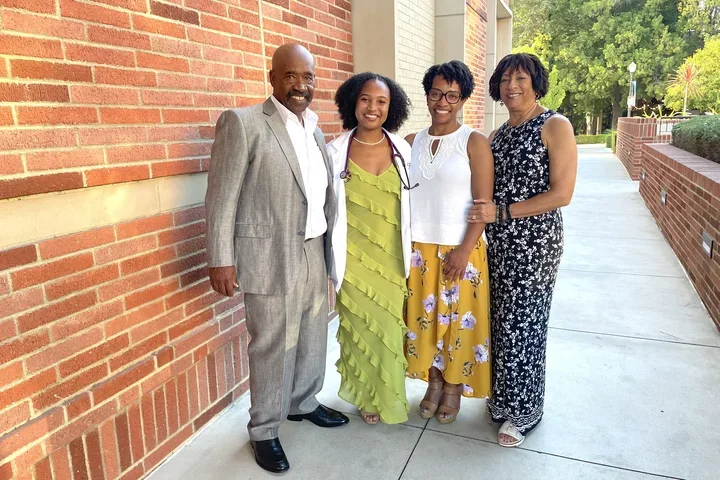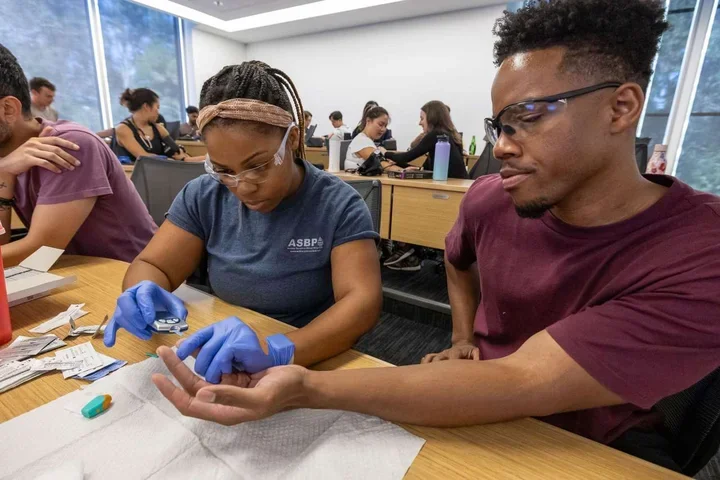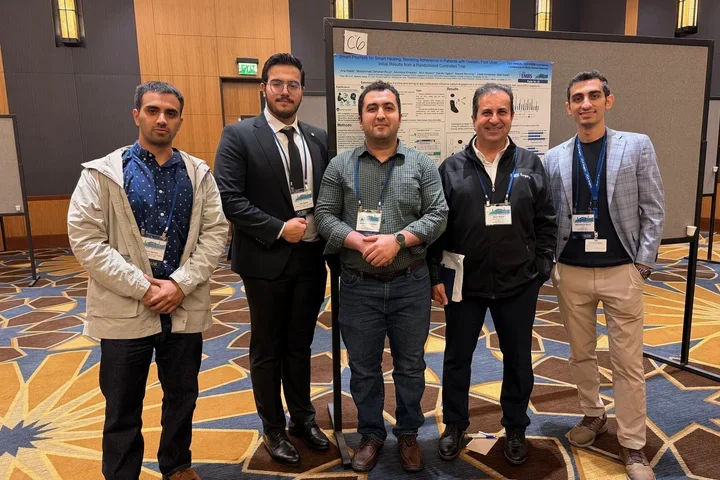Leukemia vs Lymphoma - What Is the Difference?
Research Spotlight

Types of Blood Cancer
Both leukemia and lymphoma are cancers derived from blood cells. While these cancers share similar cellular origins, they are different diseases that develop, present, progress—and affect patients—in substantially different ways.
“Leukemia and lymphoma have some similarities, but more importantly, their differences demand they be treated as distinct entities,” says UCLA’s Dinesh S. Rao, MD, PhD, a professor in pathology and laboratory medicine. He diagnoses leukemia and lymphoma in the clinic and also researches how the diseases develop on a molecular level.
LEUKEMIA
What is leukemia?
Leukemia is a type of cancer found primarily in the blood and the bone marrow.
The 4 main types of leukemia are:
Acute lymphoblastic leukemia (ALL)
Acute lymphoblastic leukemia is a fast-growing blood cancer composed of lymphocytes as well as the most common type of childhood leukemia and childhood cancer in general
Acute myeloid leukemia (AML)
Acute myeloid leukemia is a fast-growing blood cancer composed of myeloid cells.
Chronic lymphocytic leukemia (CLL)
Chronic lymphocytic leukemia is a slow-growing blood cancer composed of lymphocytes.
Chronic myeloid leukemia (CML)
Chronic myeloid leukemia is a slow-growing blood cancer composed of myeloid cells.
Acute leukemias versus chronic leukemias
Acute leukemias and chronic leukemias progress at different speeds.
Acute leukemias generally grow quickly.
“Acute leukemia is a very serious, urgent medical condition,” says Dr. Rao.
Chronic leukemias generally grow slowly, relative to acute leukemias.
Although chronic leukemias progress more slowly than acute leukemias, it is important for patients with either type to seek treatment immediately.
“There are many advanced treatments available, and it is important to rule out other more urgent conditions that can accompany chronic leukemia,” says Dr. Rao.
“Patients and their doctors may delay treatment for chronic leukemia in the beginning if there are no symptoms, but the patient will be closely monitored so treatment may begin as soon as symptoms emerge.”
Acute leukemias and chronic leukemias present at different ages.
Chronic leukemias tend to occur in elderly patients.
Acute leukemias often occur in children, as well as elderly patients. Acute lymphoblastic leukemia is the most common type of cancer in children.
Lymphoblastic/lymphocytic leukemias versus myeloid leukemias
Lymphoblastic/lymphocytic leukemias and myeloid leukemias start in different immune-system cells.
- Lymphoblastic/lymphocytic leukemias are composed of lymphocytes, found in lymph tissue, blood, and bone marrow, as well as in other tissues.
- Myeloid leukemias are composed of myeloid cells, found throughout the bloodstream.
“Myeloid cells are responsible for immediate reactions to infections, while lymphocytes provide long term immunity to infections,” Dr. Rao explains. “They have distinct functions, and this also underlies their locations in the body.”
What causes leukemia?
Genetic mutations that occur in cells lead to the development of leukemia. However, the underlying causes of the mutations themselves remain mysterious in the majority of cases.
“The latest data suggests it's just an accident in the process of DNA dividing over and over again,” Dr. Rao says. “At some point, you get a mutation in the DNA that causes cells to divide more, and the leukemia begins developing.”
"However, not all mutations that occur lead to leukemia, and in fact, most probably have no functional impact at all. Only a few of them will lead to an increase in cell division that leads to leukemia.”
Dr. Rao feels optimistic that sequencing studies and translational research will one day clarify the complete constellation of leukemia-associated mutations, and also why and how they do or do not lead to leukemia.
Is leukemia genetic?
Leukemia is genetic, as it results from mutations in genes.
“Strictly speaking, genetic means ‘of the genes,’” Dr. Rao says. “Mutations change the DNA in cancer cells within one individual.”
Individuals don’t automatically pass mutations to their offspring along with other genetic information. Genetic changes that occur in a single person and don’t get inherited by subsequent generations are called somatic genetic changes.
Is leukemia hereditary?
A small portion of leukemias are hereditary.
In these rare cases, leukemia-associated genetic changes occur in an individual and are then passed to subsequent generations.
“In these cases, leukemia-associated changes generally occurred some time ago in an individual and have been passed along to subsequent generations,” Dr. Rao explains. "These leukemias can occur at any age, although there may be other abnormalities in the blood system in affected individuals.”
What are the symptoms of leukemia?
Acute leukemias tend to present with symptoms related to the blood, generally:
- Bleeding issues
- Unexplained bruises
- Frequent infections
- Extreme tiredness
Chronic leukemias, in most cases, produce few if any noticeable symptoms. Presenting symptoms, such as fatigue or weight loss, are often too general to indicate any specific condition.
How is leukemia diagnosed?
Acute leukemia is diagnosed by a blood count followed by a bone marrow biopsy. Pathologists review the resulting images to make the diagnosis and specify the leukemia type.
Ancillary tests may be used for some diagnoses. These tests include cytogenetic testing to look for changes in the chromosomes and molecular testing to look for mutations believed to cause leukemia.
“Collectively, all the test results provide a very specific diagnosis associated with a very specific treatment path.”
Chronic leukemias, typically asymptomatic, are often diagnosed incidentally, after doctors notice an unusual white blood cell count in routine tests.
“Once discovered, these are also subjected to careful testing, similar to that for acute leukemia, and if appropriate, treatment is instituted.”
What is the treatment for leukemia?
As a blood disease present throughout the body, leukemia requires a treatment strategy distinct from localized tactics, such as surgery, that may work on other cancers.
Chemotherapy is usually the frontline treatment for leukemia.
Depending on the patient and the leukemia type, initial treatment may include additional targeted approaches, such as immunotherapies and/or small molecule drugs that target specific mutations.
Bone marrow transplantation is used as a curative therapy for patients who’ve achieved remission.
“With bone marrow transplantation, you essentially replace a patient’s blood system with the transplanted blood system, in some cases fully curing the leukemia.”
If a leukemia doesn't respond to primary therapy, practitioners will try other therapeutic approaches, which can include different types of chemotherapy, targeted therapies, immune therapies, and bone marrow transplantation.
Is leukemia curable?
It is possible to cure some leukemias. The efficacy of a leukemia treatment, and whether or not it can cure a patient, depends on a number of factors, including:
- Age
- Overall health
- Comorbidities
- Type of leukemia
Chronic leukemias tend not to be curable, but many subtypes can be managed effectively throughout a patient’s life.
“We’ve seen a lot of progress in treating acute lymphoblastic leukemia in children. It was nearly always fatal around 50 years ago, but today, over 80% of children with ALL can be cured.”
Science has made significant progress with acute myeloid leukemia as well, though it presently remains more difficult to treat and cure.
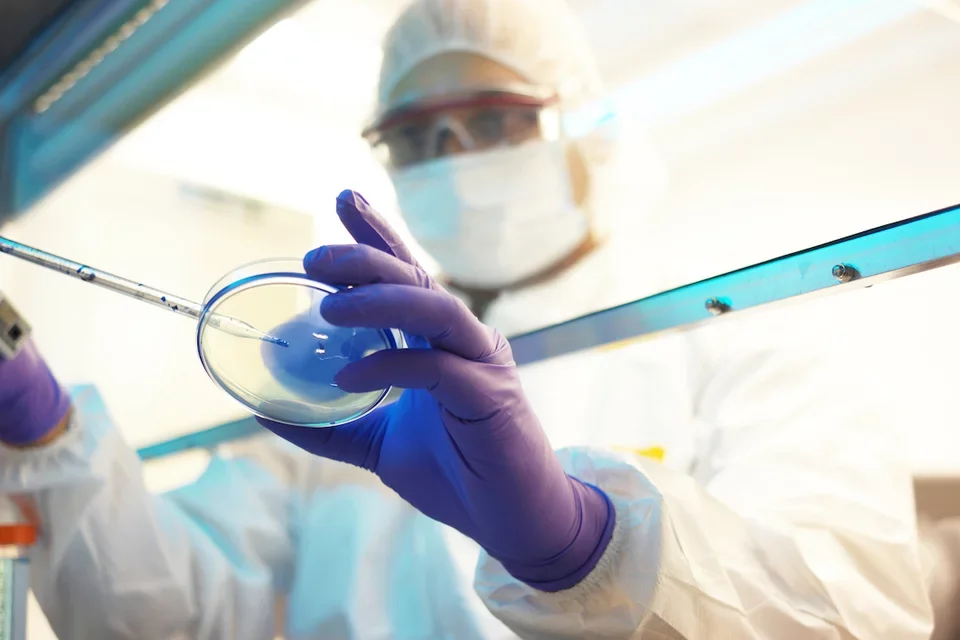
LYMPHOMA
What is lymphoma?
Lymphoma is a type of cancer found primarily in the lymph nodes and the lymphatic organs of the body.
The 2 main types of lymphoma are:
- Hodgkin lymphoma (Hodgkin disease)
- Non-Hodgkin lymphoma
Non-Hodgkin lymphomas can be classified as B-cell or T-cell, each of which can be further broken down into numerous subtypes not listed here:
- B-cell Lymphoma
- T-cell Lymphoma
“Beyond these overall classifications, there are dozens of other subtypes of lymphoma, which all have different outcomes,” Dr. Rao says. “It’s a complicated field, and forever changing.”
Hodgkin lymphoma versus Non-Hodgkin lymphoma
Hodgkin lymphoma and Non-Hodgkin lymphoma exhibit different spreading patterns
History clarifies the distinction between Hodgkin and Non-Hodgkin lymphoma.
“The first person to describe lymphoma was a doctor named Thomas Hodgkin,” explains Dr. Rao.
The lymphoma he described involved extreme swelling in the lymph nodes. It generally started in the neck and spread down toward the heart and lungs. When people began describing other lymph-node cancers that deviated from that pattern, they differentiated by calling them non-Hodgkin lymphomas.
As science evolved, so did the collective understanding of lymphomas, resulting in additional classifications and sub-types.
B-cell lymphomas versus T-cell lymphomas
B-cell lymphomas affect B lymphocytes. B-cell lymphomas comprise the majority of Non-Hodgkin lymphomas.
T-cell lymphomas affect T lymphocytes. T-cell lymphomas are relatively rare.
What causes lymphoma?
Lymphomas are caused by mutations, specifically translocations, where a chromosome breaks and the fragments fuse to different chromosomes, resulting in a change in the DNA sequence. The mutation causes the affected cells to divide more than they should.
Is lymphoma genetic?
Lymphoma is genetic, as it results from mutations in genes.
Is lymphoma hereditary?
Dr. Rao says that, as with leukemias, a minority of lymphomas are hereditary.
“Additionally, some lymphomas tend to be associated with immunodeficiencies, some of which are also hereditary,” he says, explaining that sometimes, it’s really the lymphoma’s underlying cause that’s hereditary.
What are the symptoms of lymphoma?
Lymphomas tend to present with symptoms related to the lymph nodes and the immune response, generally:
- Lymph-node swelling that doesn't resolve
- Fever
- Night sweats
- Generalized fatigue and malaise
“Lymphoma symptoms tend to be nonspecific,” Dr. Rao says. “So in many cases, physicians will order blood tests to rule out other common causes for the symptoms, such as infections, before they proceed with other diagnostic tests.”
How is lymphoma diagnosed?
A definitive lymphoma diagnosis requires biopsies and an examination by a pathologist. The specific types of biopsies that may be ordered include:
- Fine needle aspiration
- Needle core biopsy
- Surgery to remove a lymph node for examination
“After a diagnosis, the specific type of lymphoma is identified and then specific protocols are deployed for treatment,” Dr. Rao says. “Imaging studies, such as CT scans, PET scans, and MRIs, may also be used to delineate how far the lymphoma has spread.”
What is the treatment for lymphoma?
Treatment for lymphoma varies depending on the type of lymphoma, the extent of its spread, and its location within the body. Because there are many types of lymphomas, there are also many options and variations for treatment, which physicians choose based on a specific patient’s case.
Treatment for Hodgkin lymphoma generally includes radiation therapy and chemotherapy.
Treatment for non-Hodgkin lymphoma generally includes chemotherapy and antibody-based therapies, such as a monoclonal antibody.
“Other newer approaches to both Hodgkin and non-Hodgkin lymphoma include the use of advanced immunotherapies and targeted therapies, but these are highly dependent on the specific subtype.”
Is lymphoma curable?
It is possible for lymphoma to be cured. As with leukemia, how likely a lymphoma is to be cured, and how effective a treatment will be, depends on a number of factors, including:
- Age
- Overall health
- Comorbidities
- Type of lymphoma
“Treatments have improved greatly over the years,” Dr. Rao says. “Diffuse large B-cell lymphoma, which used to be a death sentence, is now curable in 60% to 70% of people.”
Blood Cancer Awareness Month
Blood Cancer Awareness Month takes place every September in the United States. The observance spreads awareness, but also knowledge, about blood cancers and the people diagnosed with them.
Dr. Rao wants people to remember that, if they or their loved one is facing a diagnosis or possible diagnosis, there is a way forward.
“It may be scary, but it’s really important to seek medical attention. There’s a way to cure so many of these patients, provided they get the right diagnosis and the right treatment in a timely way,” he says, adding that even more promising therapies enter clinical trials all the time.
“The field is full of therapeutic potential.”
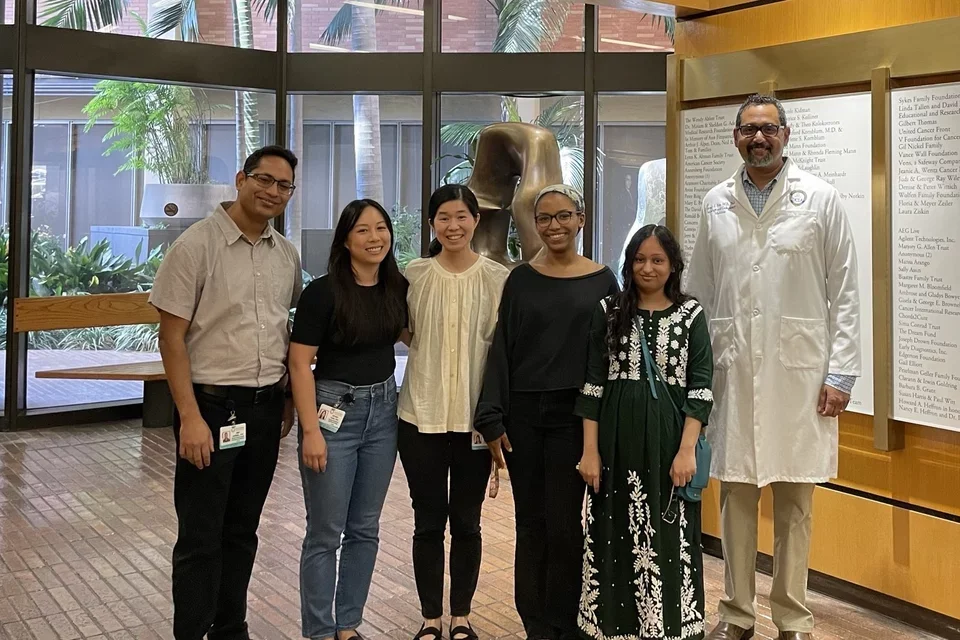
The Rao Lab
Rao decided to become a doctor when he realized practicing medicine was at the intersection of science and humanism. During medical school, he became deeply interested in research as another avenue for improving patient care. He got his PhD after earning his MD and eventually started his own translational research lab.
The Rao Lab investigates the molecular mechanisms driving normal blood-cell development and how those mechanisms deviate in the development of blood cancer. Dr. Rao says it’s incredibly rewarding when they make a rare discovery with potential to significantly change patient outcomes.
“We've discovered a strong potential therapeutic target—a protein that seems to have a very specific role in a subtype of leukemia.”
In their models, deleting the protein cured leukemia in mice. The team has already started preparing protein inhibitors for clinical testing and recently filed a patent.
“It’s exciting because the research started with leukemia patients, and with hope, it will lead to something that benefits those patients.”
